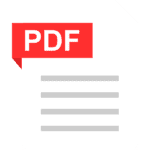Conservation Drainage
Throughout Illinois and other parts of the Midwest, farmers are increasingly investing in tile drainage systems to improve productivity and trafficability of their fields. Conservation drainage practices such as bioreactors, controlled drainage systems, saturated buffers, and constructed wetlands, are designed to capture and treat drainage from tile outlets, providing effective and often long-term nutrient loss reduction benefits.

NRCS Bioreactor Video
In the summer of 2017, the Peoria County Soil and Water Conservation District (SWCD), the USDA Natural Resources Conservation Service (NRCS) and Illinois Farm Bureau teamed up with a forward-thinking landowner to plan, design, and install a relatively new conservation drainage practice so that folks could see what the denitrifying bioreactor looks like and how it’s built. Check out this video and see if it’s something that would fit on your land!
Watch Video
TNC Edge of Field Roadmap
“Leading at the Edge: A Roadmap to Advance Edge of Field Practices in Agriculture” – This Roadmap outlines the path to successfully achieve the scale of action needed to realize widespread water and wildlife benefits. Developed through a months-long collaborative effort, the Roadmap charts actionable steps and describes the necessary tools to help the food and agriculture sector transform U.S. working landscapes and achieve its conservation goals.
Download Documents
Illinois Drainage Research and Outreach Program (I-DROP) – Ten Ways to Reduce Nitrogen Loads from Drained Cropland in the Midwest
The IDROP Ten Ways strategies include in-field cropping and management strategies (i.e., practices that reduce nitrate in the root zone), in-field strategies that modify the drainage system (i.e., practices that reduce delivery of nitrate to the field’s edge), and edge-of-field strategies (i.e., practices that remove nitrate at the edge of the field or downstream).
View Website
Transforming Drainage Project
Transforming Drainage is a 5-year, 8-state project led by a core group of 15 leading agricultural engineers, soil scientists, agronomists, economists, social scientists, and database and GIS specialists with a common vision — to transform the way drainage is implemented across the agricultural landscape.
View Website
Transforming Drainage Rate Calculator
This tool calculates the three standard coefficients (drainage rates) for characterizing the hydraulics of subsurface drainage systems.
View Website- « Previous
- 1
- …
- 4
- 5
- 6